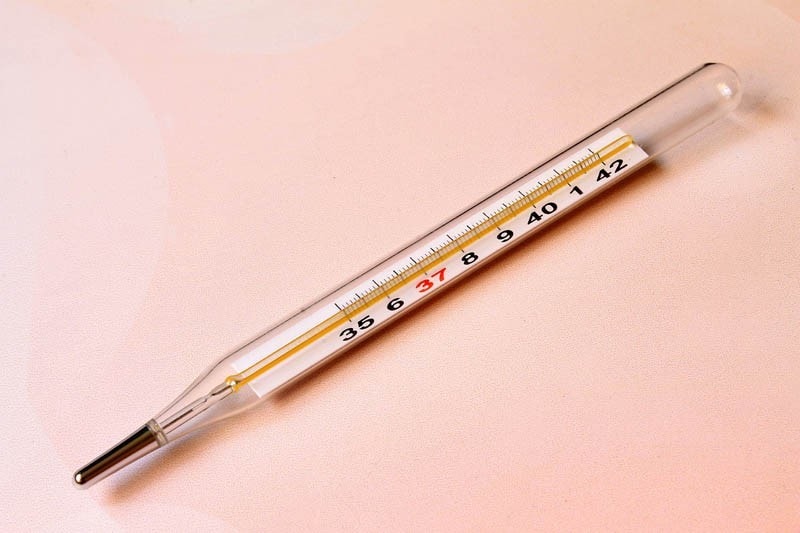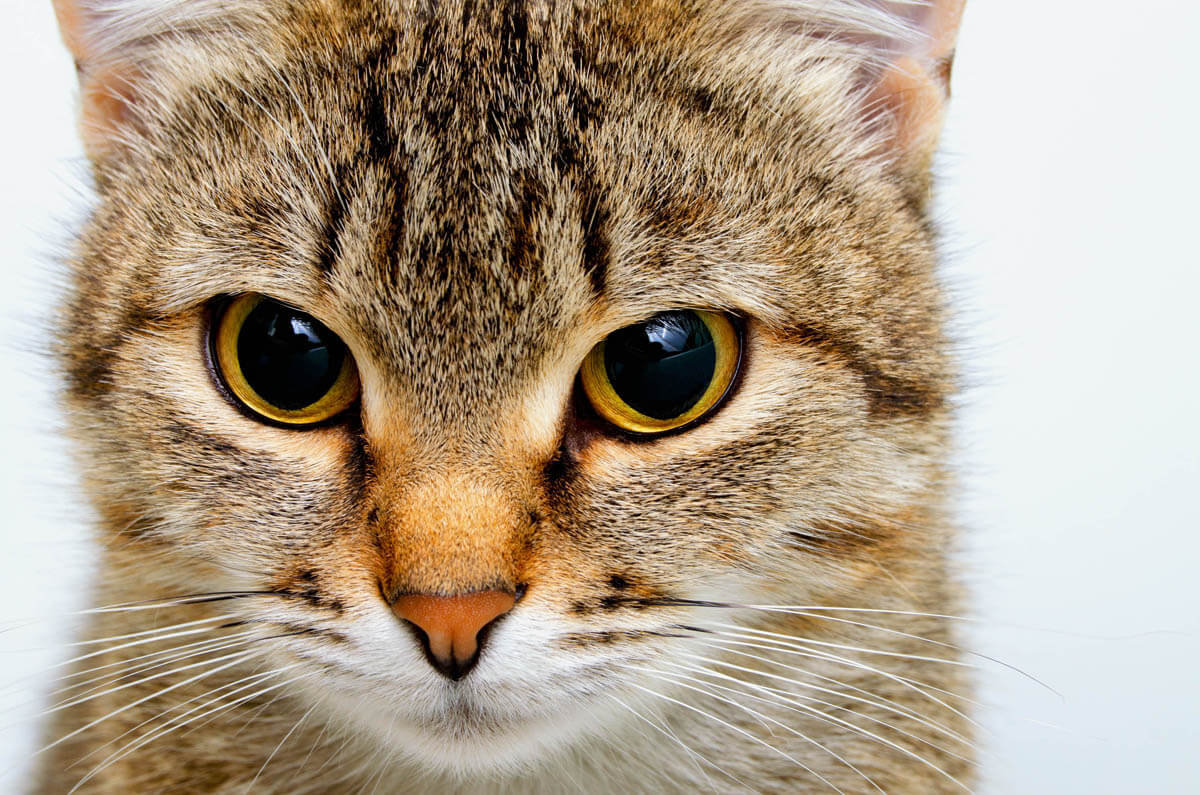What is the normal temperature for a cat?
The normal body temperature in cats is 100 – 102.5° Fahrenheit (37.7 – 39.1° Celcius). When an infection occurs, the immune system is activated and increases the temperature to fight off and kill the infectious organism. This is known as pyrexia.
Due to their stoic nature, it isn’t always easy to spot signs of sickness in cats, being familiar with a cat’s baseline vitals can help pet owners detect signs of sickness and even in the absence of obvious clinical signs.
Normal health ranges in cats
- Respiration: 20 to 30 breaths per minute in a cat at rest
- Pulse: 130 to 240 beats per minute
- Temperature: 100 to 103 F (37.7-39.4C)
- Capillary refill time: 1 to 2 seconds
- Blood pressure: Between 120 and 130 mmHg (millimeters of Mercury)
How do cats regulate their body temperature?
Thermoregulation refers to the control of the body temperature as a result of external factors such as an increase or decrease in temperature.
- Change location: Moving to a shady spot if it’s hot, moving to a sheltered spot, or into the sun if it’s cold.
- Vasoconstriction or vasodilation: Narrowing or widening of the blood vessels to restrict or increase blood flow. Blood carries heat, which is then when it reaches the surface of the skin. So on hot days, the blood vessels dilate to increase blood flow to the skin, on cold days they constrict to reduce heat loss.
- Hairs: Hairs stand on end when the temperature falls, this improves the insulating properties of the skin and coat.
- Shivering: When the temperature drops and the above methods are no longer effective, your cat will shiver. This occurs when muscles begin to shiver slightly to produce warmth by expending energy. Shivering can also occur in response to fever.
- Sweating: This isn’t as important in cats as it is in humans. Cats do sweat a little through their paws.
Causes of high temperature in cats
There are two causes of high temperature in cats, fever (pyrogenic) and hyperthermia (nonpyrogenic).
Fever (pyrexia): The most common cause of a fever in cats is a viral infection, other causes include;
- Certain medications
- Cancer
- Inflammation
- Autoimmune diseases
- Endocrine disorders
- Vascular disorders
- Fever of unknown origin
Heatstroke (hyperthermia): Hyperthermia occurs when the external temperature is higher than your cat’s body temperature and he is unable to bring the temperature down by thermoregulation. For example, a cat locked in a car on a warm day is at great risk of developing hyperthermia. This is a life-threatening condition and requires urgent veterinary attention.
Causes of hypothermia (low temperature)
The most common cause of hypothermia is prolonged exposure to cold temperatures; other causes include anorexia, certain medications, blood infection, diabetic ketoacidosis, kidney disease, liver disease, and poor ability to regulate body temperature in very young or very old cats.
Kittens and temperature
Kittens are unable to regulate their temperature for the first few weeks of life, therefore, the pet owner needs to be aware of this and maintain a steady temperature for them.
How to take a cat’s temperature

To take the temperature with a mercury thermometer you will need:
- Rectal thermometer
- Petroleum jelly
Have your cat on a firm surface such as a dining table and have your helper hold him firm so that he can’t run away. Shake the thermometer firmly until it drops to 96°F (35.5C). Lubricate the bulb tip with a little petroleum jelly, lift the base of the tail and gently insert the rectal thermometer approximately 2-3 inches into the anal canal. Hold it there for two minutes, withdraw and check the reading.
If the cat’s temperature is under 99 degrees Fahrenheit (37.2°C) or over 104 degrees Fahrenheit (40°C) seek immediate veterinary attention.
Signs of fever in cats
- Inappetence
- Lethargy
- Increased or decreased thirst
- Shivering
- Rapid breathing
How to reduce a fever in cats
If your cat only has a moderate temperature and seems otherwise well, you can try to reduce it by using fans to cool and offer fresh, cool water.
Don’t bathe your cat, this will make the situation worse by trapping the water in the coat, which acts as insulation and do not administer medications such as ibuprofen, acetylsalicylic acid (aspirin) or acetaminophen (paracetamol/Tylenol) as these common medications are toxic to cats.
Veterinary treatment
- Antibiotics to treat bacterial infections, in some cases antibiotics will be prescribed for cats with viral infections to prevent the development of secondary infection.
- Most viral infections require supportive care while your cat mounts an immune response. This may include fluids and nutritional support.
- Corticosteroids to reduce inflammation or manage autoimmune disease.
- Surgery and/or chemotherapy or radiation therapy for cancers.
Heatstroke (hyperthermia) treatment
Emergency care
For cats with mild heatstroke (body temperature of 104°F or 40°), remove the cat from the hot environment quickly and tepid water onto the animal’s fur and skin. Offer plenty of cool water if the cat can drink. Call the veterinarian for further advice.
Veterinary treatment
Always call ahead to let the veterinarian know you are on your way in with a cat suffering heatstroke.
The veterinarian will bring down the cat’s temperature down with cooling fans and lukewarm water. Room temperature crystalloids will be administered intravenously to manage hypovolemia, increasing blood flow to the periphery (extremities) to aid in the cooling process and maintaining hydration and electrolytes if the cat is vomiting. Supportive care is aimed at managing symptoms such as medications to control vomiting and oxygen therapy for cats who are experiencing difficulty breathing.
Hypothermia treatment
Emergency care
Mild hypothermia (35 – 37C or 95 – 99F)
If the cat is alert, place the cat in a warm room and use blankets and towels to warm the cat (passive surface rewarming). It can help to warm blankets in the clothes dryer for a few minutes. Heat packs or soda bottles with warm water can be used around the head, neck, armpits and groin (active surface rewarming). Always wrap in a towel to prevent burns.
Gently dry wet cats with a hairdryer on the low setting held 12 inches away from the cat.
Call your veterinarian for further advice. Even if the cat appears well, they may recommend a check-up, especially if the cat is young, old or has an underlying medical condition.
Veterinary treatment
Moderate to severe hypothermia (28 to 32C or 82 – 90F)
Cats with moderate to severe hypothermia require immediate veterinary care, call ahead to let the practice know you are on your way so that they can prepare for the cat’s arrival.
Wrap the cat in a warm blanket and keep the heater on in the car.
Treatment is aimed at warming the cat from the inside out (active core warming) which is carried out by circulating warm fluids into the body cavities and warmed intravenous fluids as well as ventilation with heated air.
Fluids will be administered to correct electrolyte imbalances and supportive care will be necessary to manage any symptoms. Blood pressure and heart rate will be regularly monitored.
Frequently asked questions
How to tell if a cat is cold?

It’s not always easy to tell if a cat is cold as they hide signs of discomfort well. Signs a cat is cold may include shivering, curling up in a tight ball, seeking warm spots in front of a heater, burying under blankets and cold ears and paws.
What medication can I give my cat for a fever?
There is no safe medication to give to a cat with a fever. Over the counter human medications such as aspirin, paracetamol and ibuprofen are toxic to cats.
What temperature is too cold for cats?
This depends on the age and health of the cat, type of fur (short, long, thick, fine, hairless), underlying medical conditions and if the cat is already wet. A good rule of thumb is anything below zero is too cold for a cat.
Can cats get too hot?
Yes, cats can get too hot as they only sweat through their paw pads. Once a cat becomes too hot, he or she is at risk of heatstroke (hyperthermia), which can be fatal. Cats should always be provided with adequate shelter from the elements, a place to retreat from the sun and extreme heat, adequate cool water.

